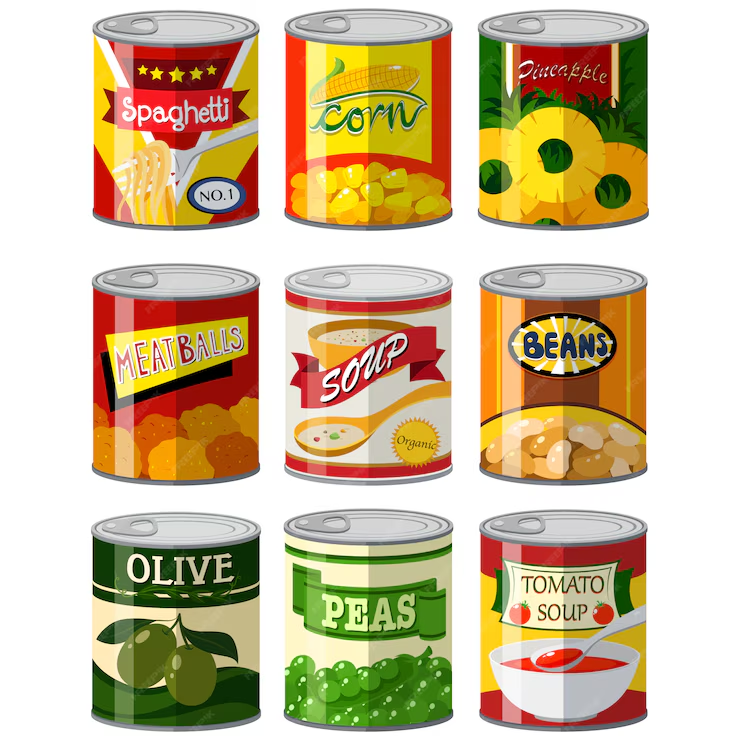In a world increasingly aware of the environmental perils posed by plastic pollution, a silent yet insidious threat lurks within our pantries and refrigerators: the linings of canned foods and beverages. Imagine opening your favorite soup or soda, blissfully unaware that beneath that shiny metal exterior lies a layer of plastic designed to preserve freshness. However, recent studies reveal that this seemingly innocuous barrier may not be as harmless as it appears; it is now being linked to the leaching of microplastics into our meals and drinks.
Microplastics, those tiny particles less than five millimeters in size, that are notorious for infiltrating ecosystems and food chains alike. New research suggests they may also find their way into our bodies through everyday consumption.
Avoid Microplastic Exposure
- Nearly all aluminum and tin cans, such as soda cans, beer cans, and canned foods have plastic-based liners to increase shelf life and prevent corrosion.
- These plastic liners commonly used to be made from BPA, a banned substance, but has been replaced with similar, potentially just as dangerous ingredients.
- Limiting consumption of canned foods and drinks while seeking out glass-packaged alternatives is a good way to avoid this form of microplastic exposure.
Canned foods and drinks are lined with plastic to reduce leakage
Varieties of aluminum and metal jars have been broadly made for putting away food and drink like soup, fish, tomatoes, beans, pop, lager, and something else for north of 200 years. Since the development of the can for food capacity in 1810, there have been many changes in their plan and assembling processes. By the 1950s, inside coatings began to turn out to be more well known as they further developed holes and consumption obstruction. Beforehand, without appropriate coating, rust could all the more effectively structure and harm the jars, giving microscopic organisms access and causing decay.
Epoxy sap linings were utilized for quite a long time, and BPA was added to further increment the solidness of these linings.
Addition of BPA increased the durability of can lines
In the last part of the 90s, it was found that BPA (bisphenol A) had endocrine upsetting properties and adversely impacted human chemical creation and equilibrium, influencing ripeness and improvement.
In 2012, the utilization of BPA was restricted in the US for plastic child bottle creation, and before long, different purposes of BPA were deliberately eliminated for canned consumables. A concentrate in 2022 reasoned that 95% of jars for food never again have BPA-containing liners. Tragically, a significant number of the endorsed substitutions presently contain BPS and BPF, kin synthetics in the bisphenol family with comparative adverse consequences.
Avoiding canned food and drinks can reduce your microplastic exposure
The badly arranged truth about canned food and beverages is that their utilization ought to be restricted if you have any desire to maximally decrease your microplastic openness, since countless particles could be ingested with each serving.
A few food varieties, for example, canned fish have much higher rates of microplastic pollution because of the climate cultivated and wild fish swim in each sea and freshwater sources on Earth currently have microplastics.
Refreshments put away in jars, similar to soft drinks, brews, seltzers, and, surprisingly, most canned water additionally have these linings. The more drawn out these fluids are put away in these jars, the more microplastics are delivered into the items.
Purchase canned food and drinks in glass alternatives if possible
Contingent upon the given choices at your neighborhood supermarket, it is feasible to find glass-kept options to regularly put away food sources, for example, pureed tomatoes.
For this equivalent explanation, we suggest utilizing glass when conceivable in the kitchen for food capacity and warming.
How can I further reduce my microplastic exposure?
In a world where convenience often trump’s environmental consciousness, the invisible menace of microplastics has quietly infiltrated our lives, from the food we eat to the air we breathe. These minuscule particles, measuring less than five millimeters, are not just an ecological concern; they pose potential health risks that scientists are still striving to fully understand.
This article will guide you through practical strategies and innovative solutions aimed at reducing your exposure to microplastics without sacrificing your modern lifestyle. By understanding the sources of microplastic contamination and integrating small yet impactful changes into your daily routine, you can reclaim control over what enters your body. Whether it’s rethinking your shopping habits or opting for more sustainable products, every action counts in this collective effort toward a cleaner environment and a healthier you. Join us as we explore effective ways to minimize microplastic exposure and embark on a journey towards greater well being!
